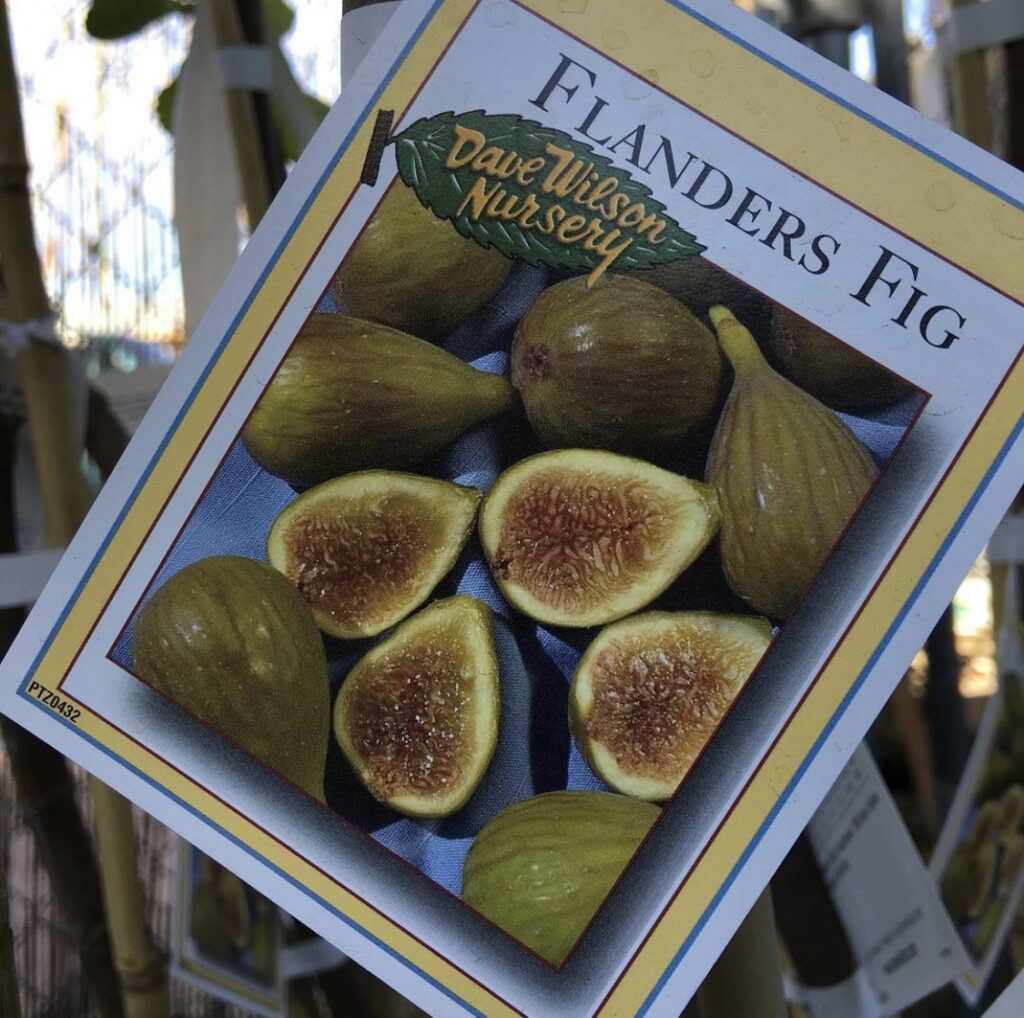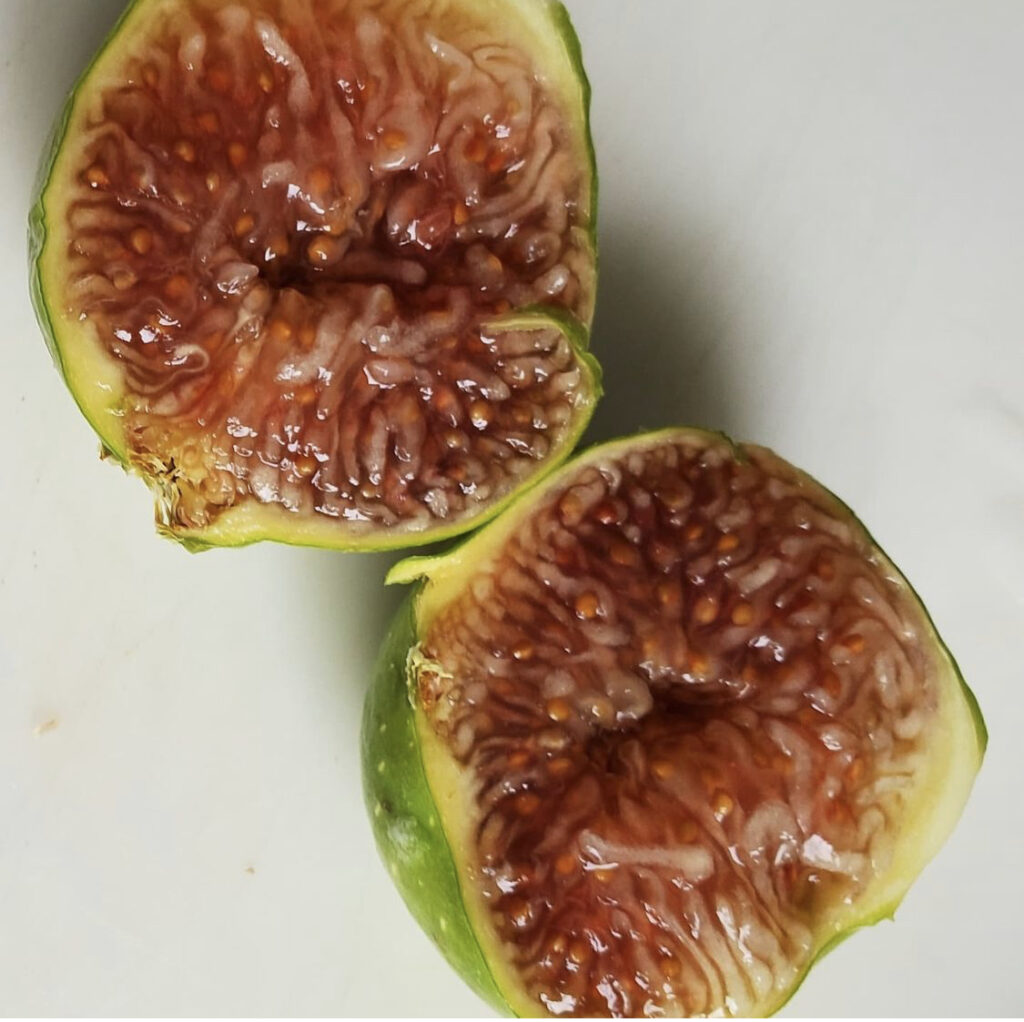Fig trees are in the genus Ficus. The sweetest fig may not be the tastiest. Sometimes the very sweet figs do not have a depth of flavor, but they have high sugar content. Some of the most delicious figs have a complex flavor profile of acidity, berries, and aroma.
There are over 800 varieties, some of which you have probably seen in the grocery store, such as Black mission figs, brown turkey figs, Palermo red, LSU gold, & Malta black. The sweetness of figs has a lot to do with climate, soil, fertilizer, and each individual’s taste buds.
It’s essential to learn about the four main figs categories before learning about the sweetest fig variety. Since figs have such a short season, you may want to freeze your fresh figs so you can preserve them before they become moldy.
To measure the sugar content of the sweetest fig, you have to use the Degrees Brix (symbol °Bx) calculation. Brix is how the food industry measures the sugar content of juices, produces, alcoholic beverages, and other food items.
Categories of Figs
There are four main categories of figs.
Caprifig
These are memorable figs that house the baby wasps. Since it has short flowers, it is easy for the wasp to lay the eggs in between the flowers. Fig wasps use the pollen from the caprifig to pollinate edible and inedible figs. A wasp enters the fig through the ostiole (opening on the bottom), lays eggs between the male and female flowers, and then dies. In the process, the female wasp fertilizes the female flowers. These pollinated flowers produce seeds for more fig plants. Once the male wasp’s hatch, mate with other female wasps, then crawl out a side hole and die. Female wasps that crawl into female figs will not be able to lay their eggs. However, they still help with pollination. The fig will absorb the wasp’s body and eggs as it grows.
Common Fig Ficus carica
The Common fig does not require a wasp for pollination to occur, and you find this particular type of fig tree in colder climates where wasps are not prevalent. Many of the sweetest fig varieties are common figs.
San Pedro Fig
Figs of the San Pedro variety produce an edible breba crop and the main crop. However, the main crop usually cannot ripen without wasp pollination. The first crop is grown on leafless older wood, whereas the second fig crop matures on new wood with a need for pollination by a male flower. The San Pedro fig is a hybrid of the common fig and Smyrna fig. The main crop needs the wasp, and the first smaller (breba crop) does not.
Smyrna Fig
Wasps are necessary for fig production, and Smyrna figs won’t produce fruit unless adequately pollinated. Many growers will place the Caprifigs near the Smyrna fig tree so the wasps from the Caprifigs can help pollinate the Smyrna figs.
A List of Some of the Sweetest Figs
Be aware that usually, a fig becomes sweeter when you let it ripen on the tree. Many factors affect the sweetness of the fig. Soil, climate, water, and fertilizer all play a role in creating the sweetest figs. It’s best not to eat unripe figs because they may have the allergen ficin near the stem. If you have a fig tree and the season is over, you may need to pick all of the unripe figs off of the tree. Doing this will prevent rot and fungus from taking over the stalks.
Most of the sweetest fig varieties are not available in chain grocery stores, and whole Food may care about some of these, and you also may find them for sale at local farmers’ markets.
Flanders Figs

A Common fig tree produces Flanders figs. This tree has bright green figs that are very sweet, and they self-fertilize. The Flanders figs are one of the most precious figs, and common varieties are grown in California.
Bursa Fig

As long as you get a ripe one, these are black, medium to large, and one of the sweetest figs. If you pick one too early, then it won’t be as sweet as a ripe Bursa. They may be hard to find in a grocery store but if you want to try growing a small fig tree you can find cuttings from some of the sweetest fig trees online, or better yet at your local gardening store.
Italian Honey Fig

Honey figs are known as one of the sweetest fig varieties around. The sweetest Italian Honey figs have light green skin with a honey-colored center. You won’t see a lot of seeds inside, but instead, it has a web of jelly-like sweet flesh. They usually taste like honey and drip honey-like syrup out the bottom.
Louisiana Honey
Rumour has it that this fig was originally from cuttings off of an Italian Honey fig tree. The fig is in the super sweet fig category. You probably won’t find this fig in any stores; you will have to do some deep internet searching to find some cuttings of the sweetest fig; the Louisiana Honey.
LSU Golden Celeste
LSU Golden Celest belongs in the sweetest fig category. Some may even classify the LSU Golden Celeste fig as too sweet.
Gros Monstreuse
It’s a sweet syrupy fig with a red interior.
Kadota Fig
The Kadota fig tree self pollinates, so you do not need the wasp to enjoy these sweet figs. When ripe, a Kadota fig is yellow-green on the outside and guava pink on the inside. Although sweet, they don’t taste like honey. You can occasionally find Kadota figs at grocery stores and farmers’ markets.
Osborn Prolific
Rust fig, also known as Osborn Prolific fig, belongs to a group of figs from Turkmenistan. Fruits of this cultivar are medium-sized, with light-colored flesh and reddish, brown skin. Fruits are sweet and have few seeds.
Chicago Hardy
If you want to plant a fig tree but live in a colder climate, the Chicago Hardy is a great fig tree to get you started. The figs on this beautiful tree ripen in late summer and are light purplish-brown with pink flesh. Chicago Hardy survives zone 6 winters more successfully, providing an exciting winter fig tree. They are one of the sweetest fig varieties, and if you like sweet figs, give them a try.
Trader Joes Figs
Trader Joe usually carries one to four varieties of figs each year, and they are only available for a few weeks during the summer. However, you can also find Trader Joe’s dried figs too as well as fig jam. The main fresh trader joes figs are the black figs, organic black figs, green figs, or Panache tiger figs.
We love the Trader Joe black figs. They are black on the outside with a sweet strawberry red center. On the other hand, the panache tiger figs have yellow stripes on the skin and a light strawberry center. The flavor is berry-like and not overly sweet.
The interior of the trader joes tiger figs looks and tastes like jam. The Panache tiger fig usually has more flavor and a better texture than the Trader Joe’s black figs. The trader Joes tiger figs are generally available for one week in august. Since Trader Joe’s figs are not available year-round it’s a good idea to have a fig alternative in mind as a backup. Even if you think it’s fig season sometimes you get to the store and the choices look overripe or moldy. Plan ahead with figs!
Conclusion
If you’re looking for the sweetest figs, look no further than Flanders. These bright green figs are self-fertilizing and they have a wonderful syrupy consistency with just enough seeds to keep things interesting. If you want something more unique try Kadota or Osborn Prolific figs! Both of these varieties offer an amazing sweetness that will make your mouth water in anticipation of their taste.
Fig trees make excellent additions to any garden. They produce delicious fruit that is sweet and tastes like honey, which can be eaten fresh or dried for later use. If you want to plant your fig tree but live in an area where winters are harsh, check out the Chicago Hardy variety of figs that thrive in zones 6-8. To learn how to choose the sweetest figs, read this article.

